Navigation
Install the app
How to install the app on iOS
Follow along with the video below to see how to install our site as a web app on your home screen.
Note: This feature may not be available in some browsers.
More options
Style variation
You are using an out of date browser. It may not display this or other websites correctly.
You should upgrade or use an alternative browser.
You should upgrade or use an alternative browser.
First Detail of New Vette.....
- Thread starter JonB
- Start date
imported_doug
New member
I would suggest you look in the marine circles. Boats have lots of stainless and it is exposed to harsh environments.
I poked around at the WestMarine site and found more than you probably wanted to know:
<blockquote class='ipsBlockquote' >
Stainless steel is an alloy that contains at least 50% iron and 10% chromium. The chromium inhibits corrosion and thus plays a part in defining stainless steel. The more chromium, the more corrosion-resistance, up to a maximum of about 30%. But chromium is not the only factor in corrosion resistance. Many other elements are added to enhance the properties of a particular grade and type of stainless steel.
Stainless steel alloys are grouped according to the structure of their crystals. Adding nickel creates the structure used in marine applications, called austenitic. Austenitic stainless steels are identified by their 300-series designation. Types 302 and 304 stainless are widely used for rigging, fasteners, fittings and propeller shafts.Type 302 is a general purpose stainless steel with good strength properties, which is resistant to many corrosives. Most of the stainless produced today is type 304, a low-carbon variation of 302, also called 18-8, because it's made of 18% chromium and 8% nickel. There are many 304 sub-alloys formulated for specific applications. Type 304 has good resistance to corrosion by a great number of chemicals. Consequently, it satisfies a broad demand for adequate performance at an affordable price. But there are a number of marine applications where 304 and other 300-series types are inadequate. For instance, 303, which contains sulfur or selenium for easy machining, has poor corrosion resistance in the marine environment.
By adding more nickel and 2% molybdenum to 304 stainless, you get type 316, which has the best corrosion resistance among standard stainless steels. It resists pitting and corrosion by most chemicals, and is particularly resistant to salt water corrosion. There is a trade-off, however. Type 316 is only about 85% as strong as 302 or 304. Among the best austenitic stainless alloys for rigging are the "super stainless" variants: Nitronic 50 (also called 22-15-5) and Aquamet 22, which contain nitrogen and vanadium. Their "super" status is, of course, reflected in their price.
When stainless steel is produced, the chromium forms an outer oxide later. As long as that layer remains intact, the stainless remains passive. Stainless steel that has been passivated is immersed in a heated bath of phosphates or salts which form an oxide film to seal off the iron to prevent it from going into solution in water, which is what produces corrosion. Once the oxide layer begins to break down, the stainless steel becomes active and its corrosion resistance is reduced. Rust is the obvious, visible evidence of corrosive activity.
There are a variety of ways in which the oxide layer is compromised. These include pitting and crevice corrosion caused by microscopic water-retaining cracks or scratches, microscopic impurities, galvanic corrosion, corrosion fatigue and stress fatigue cracking. For rod rigging, corrosion fatigue is the biggest enemy. Stress on rod rigging is concentrated at the rod head, which eventually suffers cracks you can't see without disassembling the rig, so failure is difficult to predict. In wire rigging, the stainless wire is subject to stress and fatiguing every time the boat rolls which, over a 10-year average lifespan, adds up to literally millions of stresses on the rig. The insides of the lower terminals of swaged-on fittings and the insides of barrel-type turnbuckles collect water. The corrosion that results will likely be invisible or difficult to detect. Unfortunately, a failure may be the first indication that your stainless is deteriorating.
Rigs constructed of 316 stainless will generally outlive those built of 302 or 304, especially in warm tropical waters, where salt water corrosion is a formidable adversary. If you select 316, consider increasing your wire one size to make up for the reduction in strength. But price carefully. Stepping up one size in wire will increase your rigging strength 15-16%, but your cost may increase exponentially, since the wire is not the expensive part of the bargain. The larger turnbuckles, jaws, eyes, clevis pins, etc. required by the larger diameter wire can wreak havoc on your budget.
Regular inspection is the best prevention (as usual on a boat). Use a 50x pocket magnifier if you really want to see what's happening on the surface of your stainless rigging and fittings. For preventive maintenance, polish the surface of your stainless with a stainless steel polish like Wichard's Wichinox. Wichard achieved its reputation for superior polished stainless finishes by polishing their hardware twice as long as anyone else in the industry. Polishing creates a smooth metal surface and helps minimize the number of pits, valleys and microscopic cracks where moisture can reside and create the environment corrosion loves.
</blockquote>
I poked around at the WestMarine site and found more than you probably wanted to know:
<blockquote class='ipsBlockquote' >
Stainless steel is an alloy that contains at least 50% iron and 10% chromium. The chromium inhibits corrosion and thus plays a part in defining stainless steel. The more chromium, the more corrosion-resistance, up to a maximum of about 30%. But chromium is not the only factor in corrosion resistance. Many other elements are added to enhance the properties of a particular grade and type of stainless steel.
Stainless steel alloys are grouped according to the structure of their crystals. Adding nickel creates the structure used in marine applications, called austenitic. Austenitic stainless steels are identified by their 300-series designation. Types 302 and 304 stainless are widely used for rigging, fasteners, fittings and propeller shafts.Type 302 is a general purpose stainless steel with good strength properties, which is resistant to many corrosives. Most of the stainless produced today is type 304, a low-carbon variation of 302, also called 18-8, because it's made of 18% chromium and 8% nickel. There are many 304 sub-alloys formulated for specific applications. Type 304 has good resistance to corrosion by a great number of chemicals. Consequently, it satisfies a broad demand for adequate performance at an affordable price. But there are a number of marine applications where 304 and other 300-series types are inadequate. For instance, 303, which contains sulfur or selenium for easy machining, has poor corrosion resistance in the marine environment.
By adding more nickel and 2% molybdenum to 304 stainless, you get type 316, which has the best corrosion resistance among standard stainless steels. It resists pitting and corrosion by most chemicals, and is particularly resistant to salt water corrosion. There is a trade-off, however. Type 316 is only about 85% as strong as 302 or 304. Among the best austenitic stainless alloys for rigging are the "super stainless" variants: Nitronic 50 (also called 22-15-5) and Aquamet 22, which contain nitrogen and vanadium. Their "super" status is, of course, reflected in their price.
When stainless steel is produced, the chromium forms an outer oxide later. As long as that layer remains intact, the stainless remains passive. Stainless steel that has been passivated is immersed in a heated bath of phosphates or salts which form an oxide film to seal off the iron to prevent it from going into solution in water, which is what produces corrosion. Once the oxide layer begins to break down, the stainless steel becomes active and its corrosion resistance is reduced. Rust is the obvious, visible evidence of corrosive activity.
There are a variety of ways in which the oxide layer is compromised. These include pitting and crevice corrosion caused by microscopic water-retaining cracks or scratches, microscopic impurities, galvanic corrosion, corrosion fatigue and stress fatigue cracking. For rod rigging, corrosion fatigue is the biggest enemy. Stress on rod rigging is concentrated at the rod head, which eventually suffers cracks you can't see without disassembling the rig, so failure is difficult to predict. In wire rigging, the stainless wire is subject to stress and fatiguing every time the boat rolls which, over a 10-year average lifespan, adds up to literally millions of stresses on the rig. The insides of the lower terminals of swaged-on fittings and the insides of barrel-type turnbuckles collect water. The corrosion that results will likely be invisible or difficult to detect. Unfortunately, a failure may be the first indication that your stainless is deteriorating.
Rigs constructed of 316 stainless will generally outlive those built of 302 or 304, especially in warm tropical waters, where salt water corrosion is a formidable adversary. If you select 316, consider increasing your wire one size to make up for the reduction in strength. But price carefully. Stepping up one size in wire will increase your rigging strength 15-16%, but your cost may increase exponentially, since the wire is not the expensive part of the bargain. The larger turnbuckles, jaws, eyes, clevis pins, etc. required by the larger diameter wire can wreak havoc on your budget.
Regular inspection is the best prevention (as usual on a boat). Use a 50x pocket magnifier if you really want to see what's happening on the surface of your stainless rigging and fittings. For preventive maintenance, polish the surface of your stainless with a stainless steel polish like Wichard's Wichinox. Wichard achieved its reputation for superior polished stainless finishes by polishing their hardware twice as long as anyone else in the industry. Polishing creates a smooth metal surface and helps minimize the number of pits, valleys and microscopic cracks where moisture can reside and create the environment corrosion loves.
</blockquote>
Whoaaa!!!!!! Carguy....talk about information overload!!! All I want to do is polish the refrigerator and stove....not get a degree in metalurgy!!  But it is indeed interesting to know how complex things can be that we take for granted every day.... For instance, I can give you a pretty good education on pots and pans, that I learned today at Bloomies. SS, anodized aluminum, aluminum or copper core etc etc. I don't know how my wife did it, but I got a refrigerator and a stove for my birthday last week and today she managed to get me $1K (yes that is right) worth of pots and pans.....H
But it is indeed interesting to know how complex things can be that we take for granted every day.... For instance, I can give you a pretty good education on pots and pans, that I learned today at Bloomies. SS, anodized aluminum, aluminum or copper core etc etc. I don't know how my wife did it, but I got a refrigerator and a stove for my birthday last week and today she managed to get me $1K (yes that is right) worth of pots and pans.....H H
H H
H There goes the next 3 months detailing supplies budget!
There goes the next 3 months detailing supplies budget!
BW....that is more what I was looking for. Thanks! :up
H :bounce
BW....that is more what I was looking for. Thanks! :up
H :bounce
BIGBOYF the reason they do not want you to use Steel wool is that it will leave small iron deposits that will rust up.
Go to WEST marine's site or another Marine supplier and see what they have for SS polish.
OR and architectural site may help. SS is popular again for a building material in fancy homes and stuff.
The AIO probably removed some nickel in the sink that is why it turned grey I bet. Most sinks are made from 316 so they do not rust so fast. Microscopic amounts so no real worry.
Go to WEST marine's site or another Marine supplier and see what they have for SS polish.
OR and architectural site may help. SS is popular again for a building material in fancy homes and stuff.
The AIO probably removed some nickel in the sink that is why it turned grey I bet. Most sinks are made from 316 so they do not rust so fast. Microscopic amounts so no real worry.
KR CoolShine
New member
I use AIO on all my stainless steel appliances. The black you are getting on your cloth is all the dirt, crud, and oxidation that is all over the steel.
Remember, a kitchen environment always includes some cooking greases and oils. They stick to the steel and attract dirt.
What I think works best -- Wash appliances with EF HI, rinse, then dry with a MF towel. Apply AIO with your Porter Cable (or by hand with foam), then buff with a fresh MF towel.
Remember, a kitchen environment always includes some cooking greases and oils. They stick to the steel and attract dirt.
What I think works best -- Wash appliances with EF HI, rinse, then dry with a MF towel. Apply AIO with your Porter Cable (or by hand with foam), then buff with a fresh MF towel.
KR CoolShine
New member
Just like your brand new car's paint is so clean that no one needs to ABC, or clay, or PPCL, or whatever?
Ever been in one of the plants they make those things in?
Use the AIO, you'll be surprised just how dirty your brand new appliance really is! I was with my brand new stainless steel dishwasher's front.
Ever been in one of the plants they make those things in?
Use the AIO, you'll be surprised just how dirty your brand new appliance really is! I was with my brand new stainless steel dishwasher's front.
imported_Luster
New member
Now that the wedding weekend and the rainy weather have settled down, I was able to do my first detail of the new Corvette this morning.
After claying, I inspected the entire car under the Brinkman and there are no swirls. (Dealer never touched the car. I made sure of that!)
Process:
Washed with Meguiars Gold Class
Dried with leaf blower/Big blue
Clayed with Zaino Red Clay/Z6 lube (lots of BROWN rail dust!)
Wiped with IPA/water
Applied BFWD by hand, wiped with Chem Guys "Fluffer" towel (x2 with one hour between coats)
Final wipedown with Z8.
Interior wipedown with Meguiar's Interior Detailer (thanks for the rec Nick!):biggrin:
Engine - quick wipedown with Z6
Haven't protected the wheels yet, but planning on clay/Wheelwax.
GM did a pretty good job on this clear coat. Very little orange peal!
Here they are:
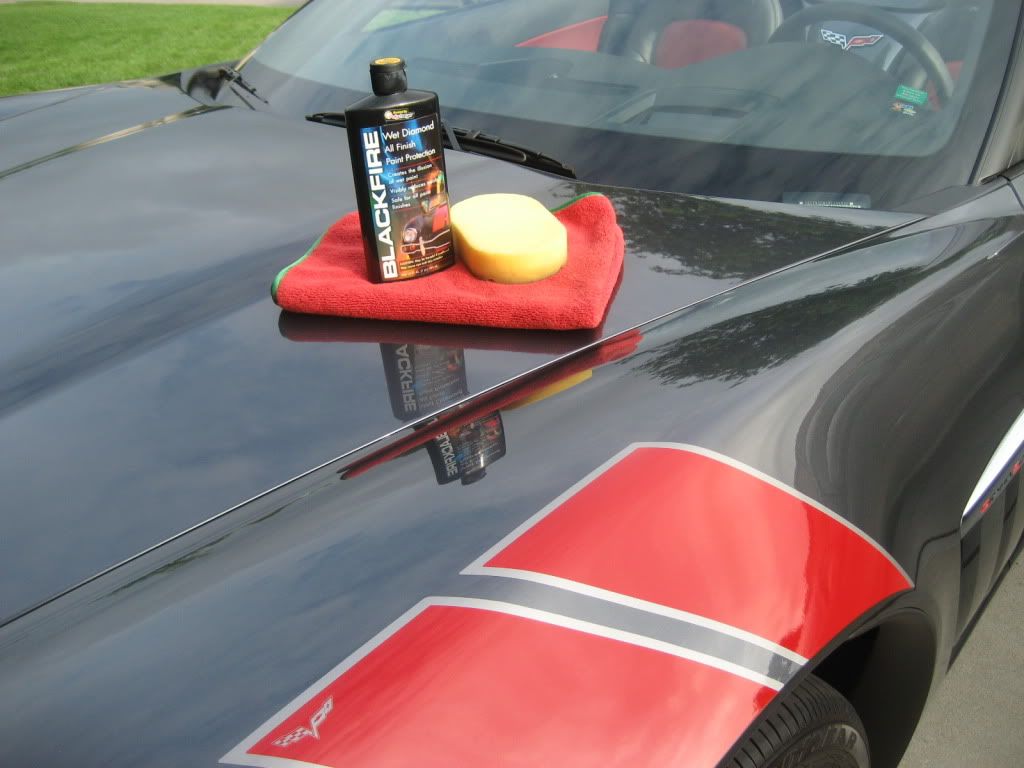
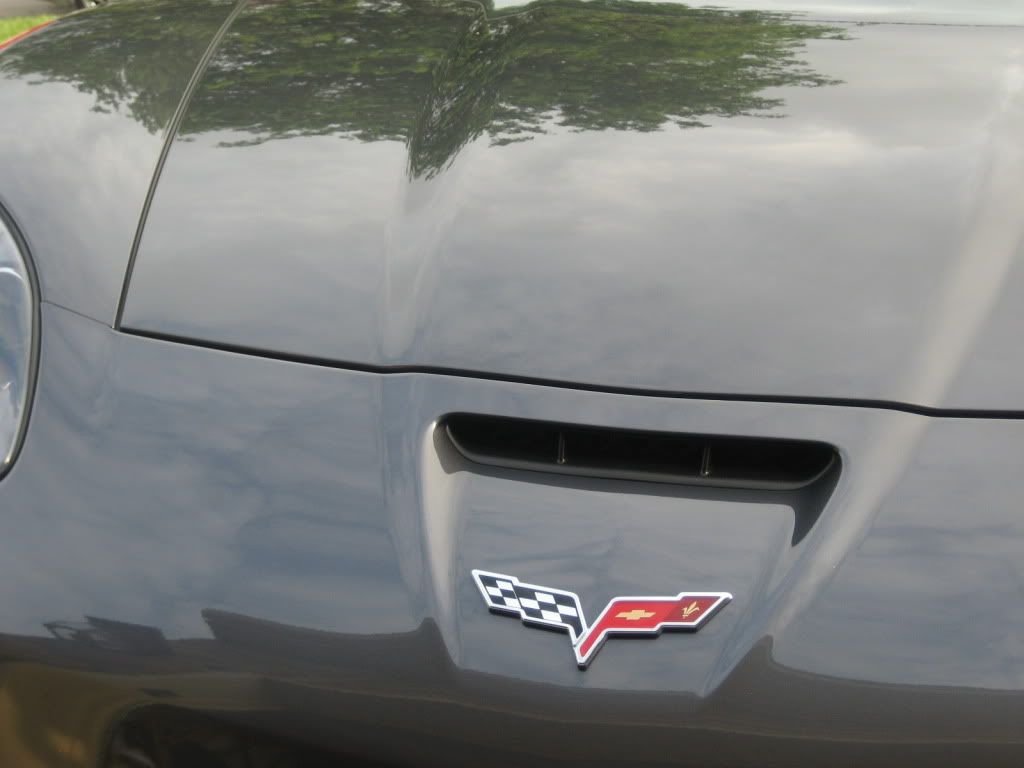

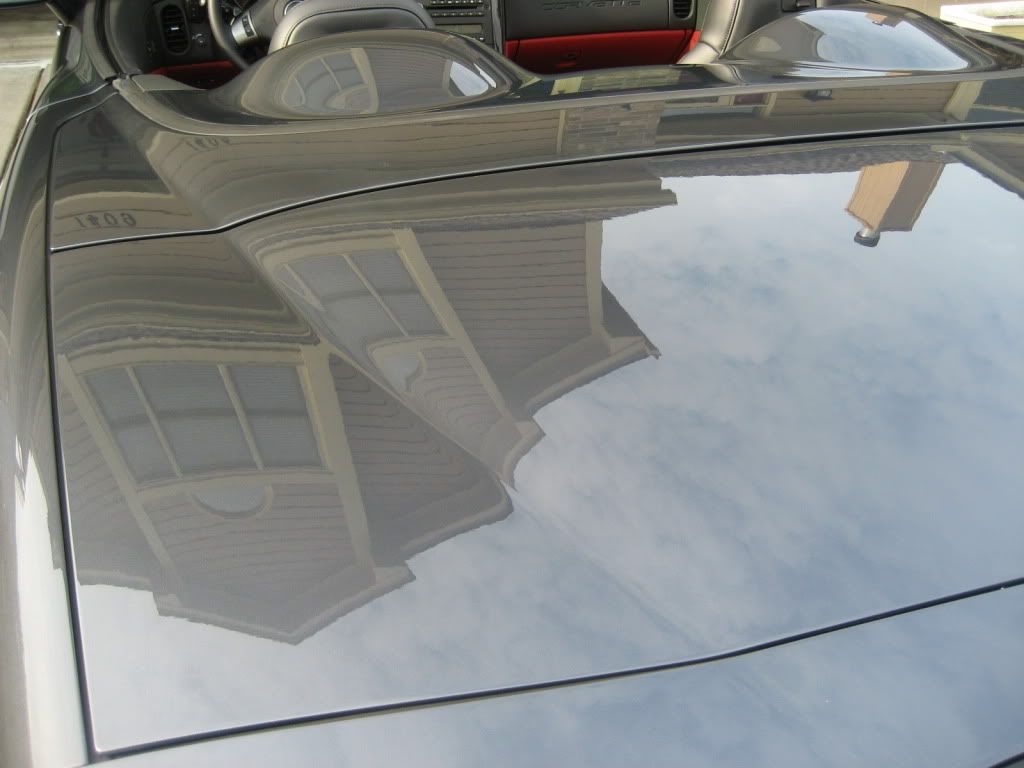
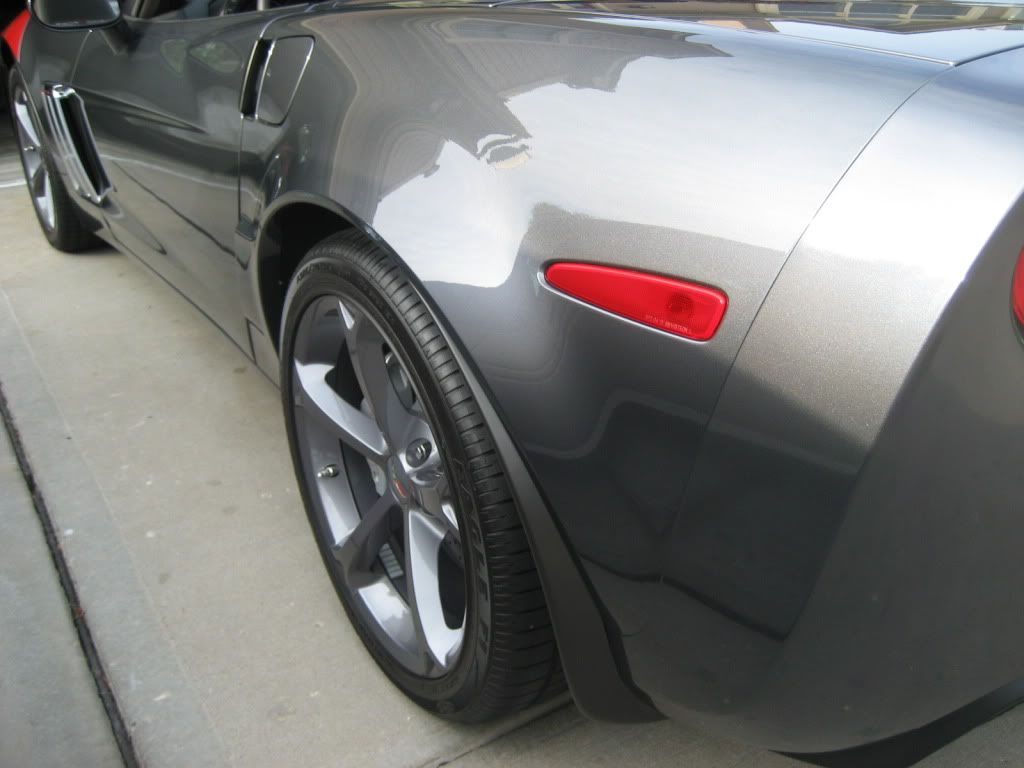
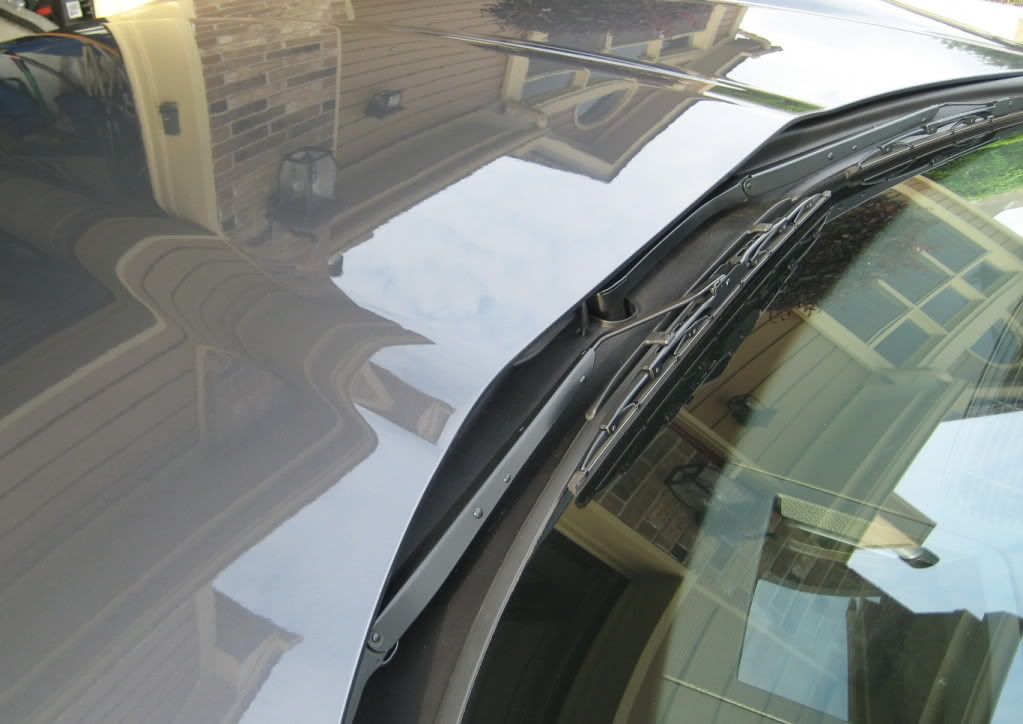
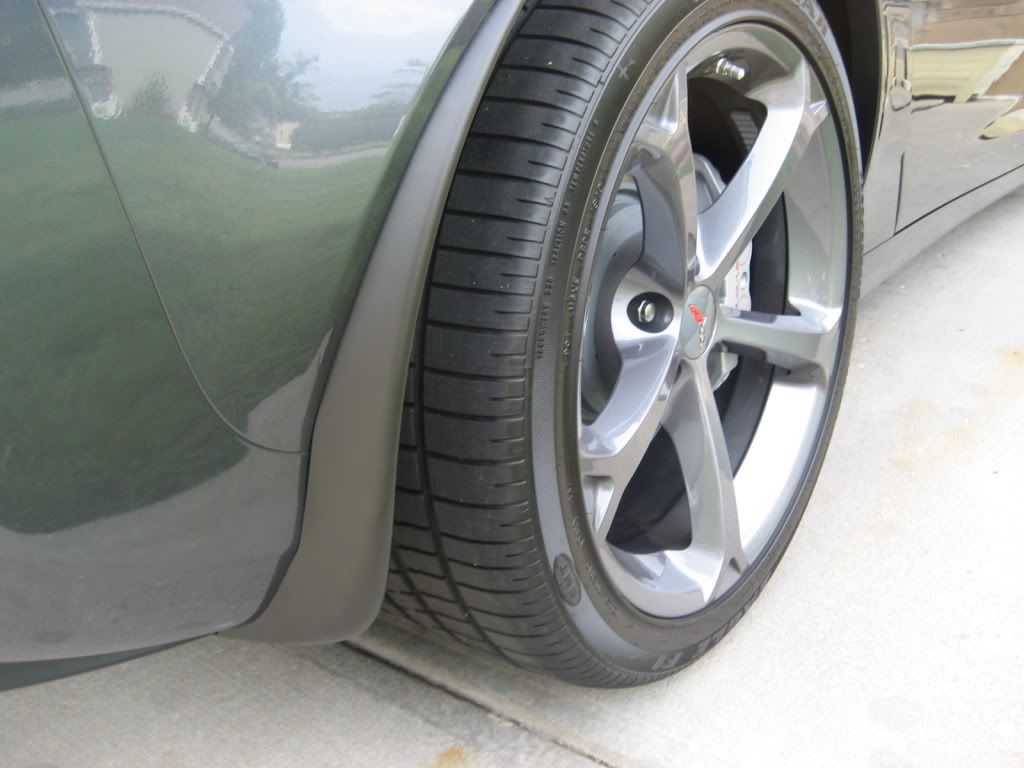
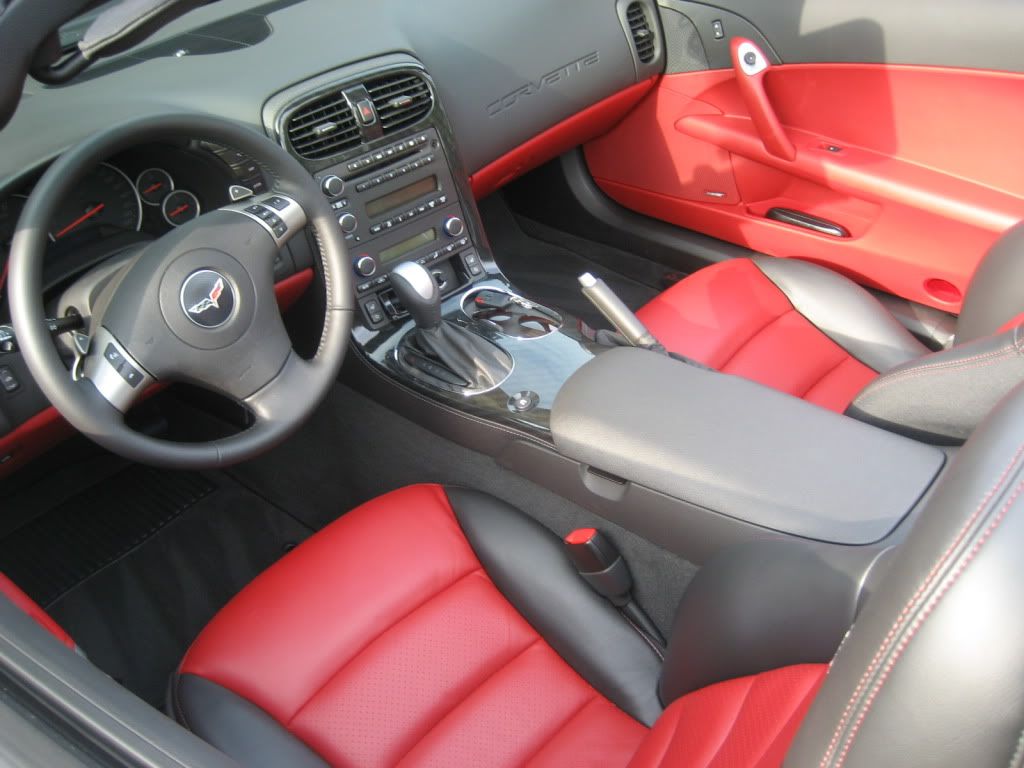
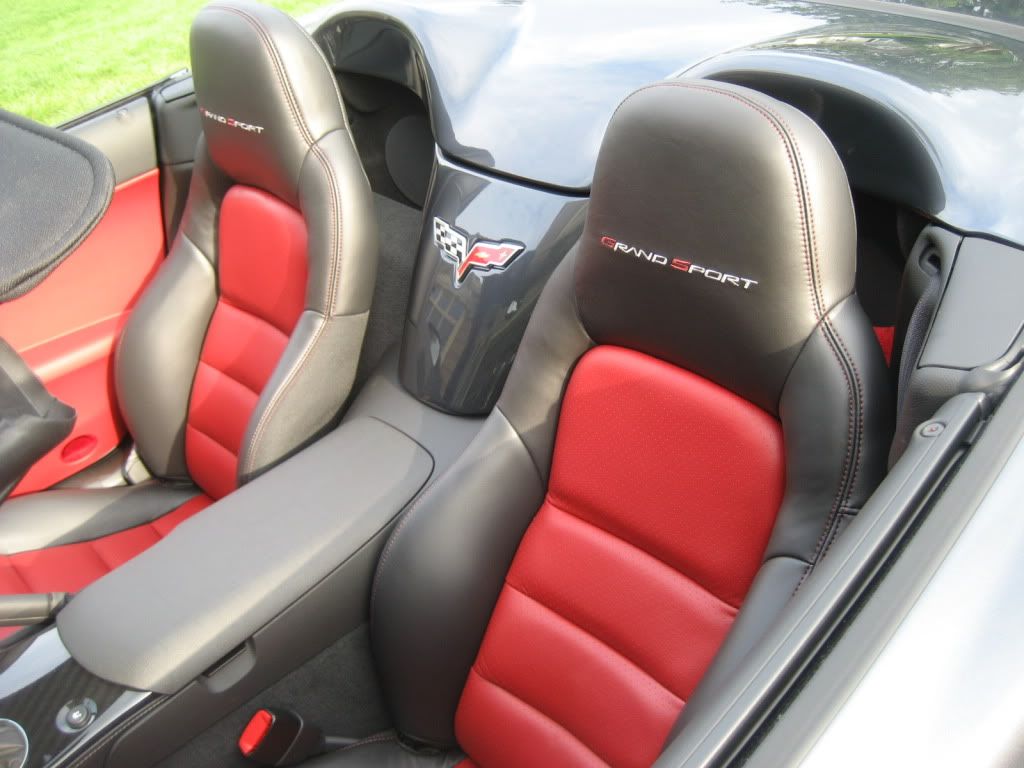
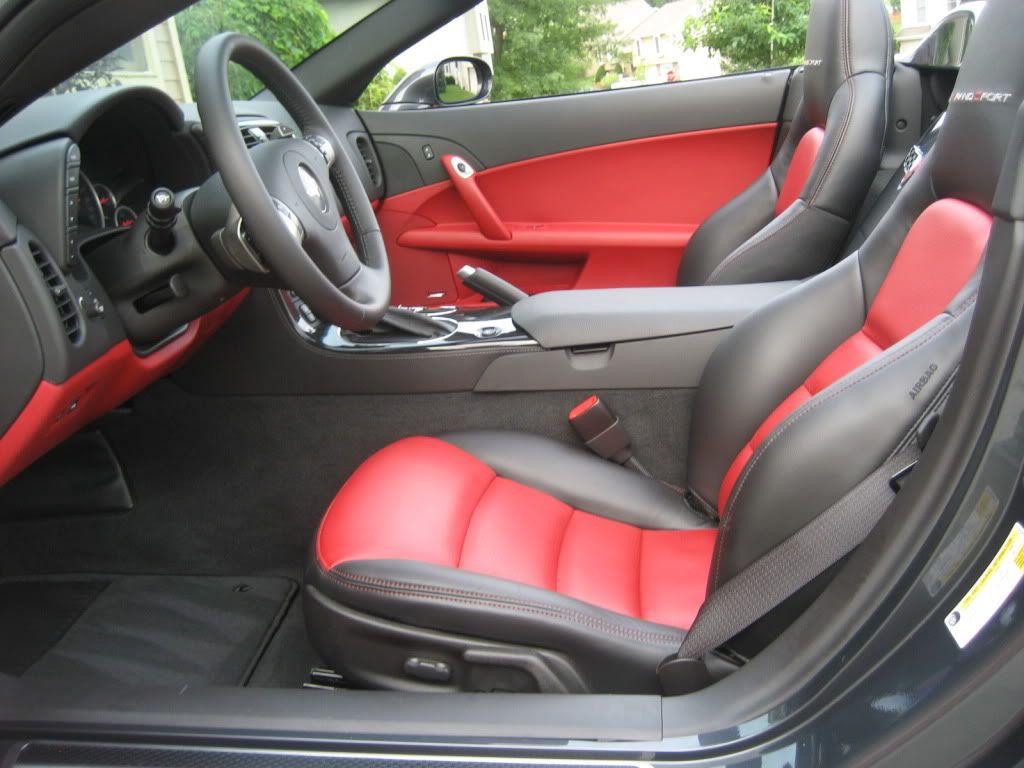
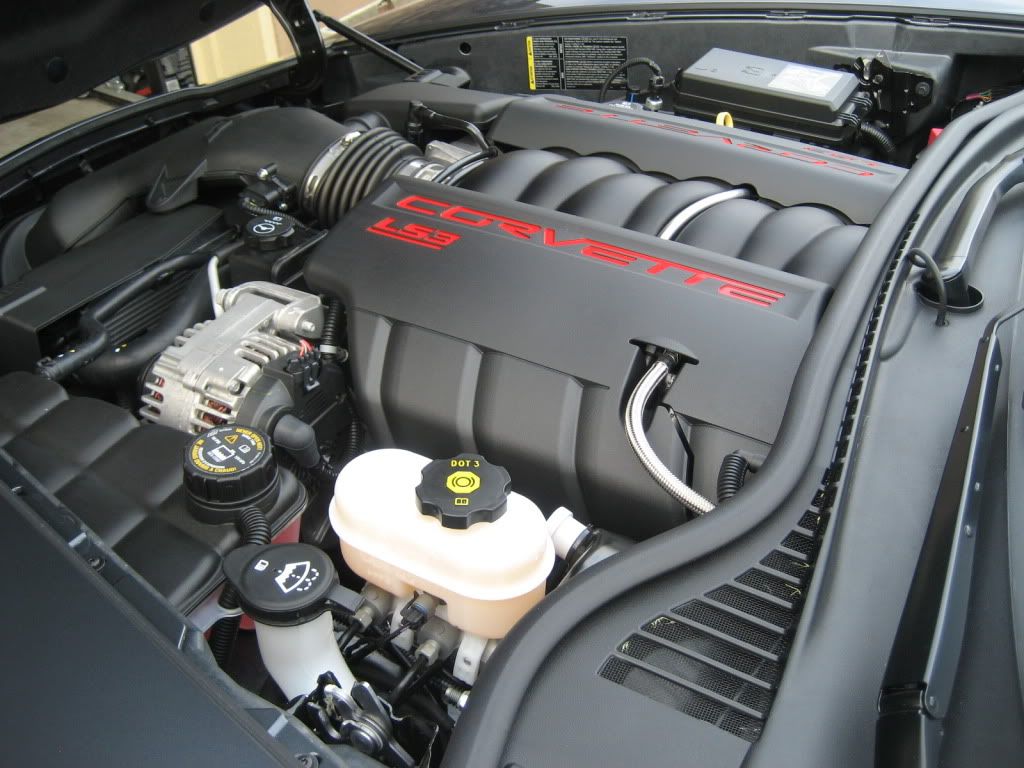
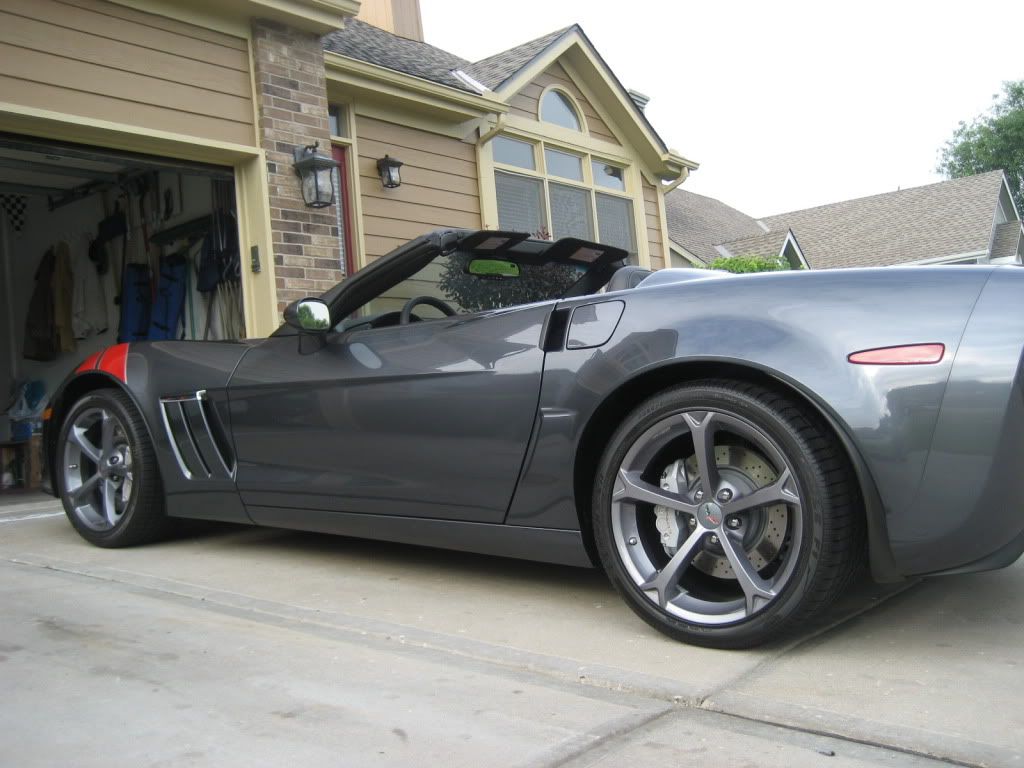

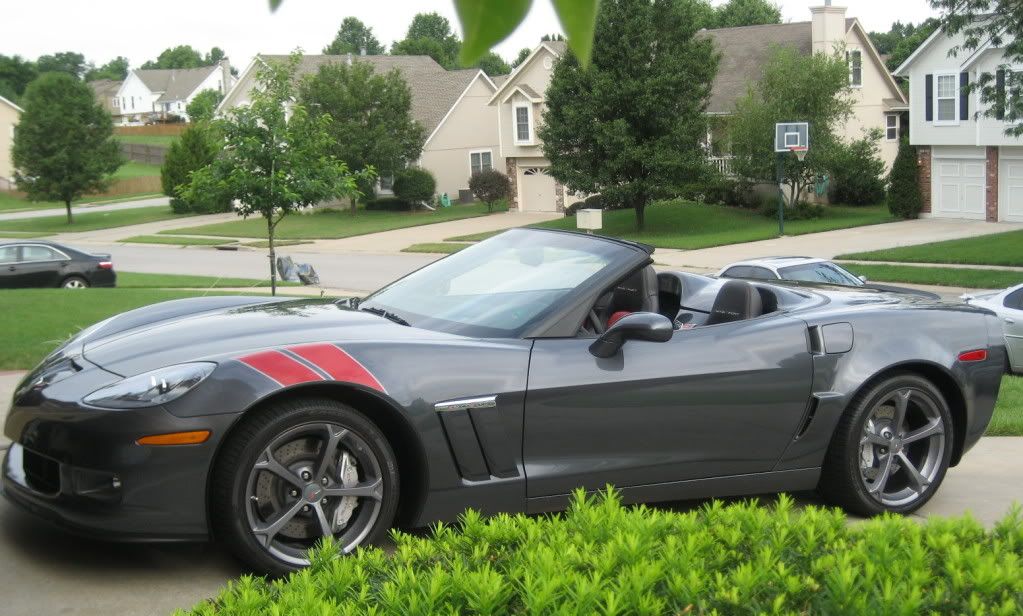
OOOOOOOOO..... What's that little remote for?
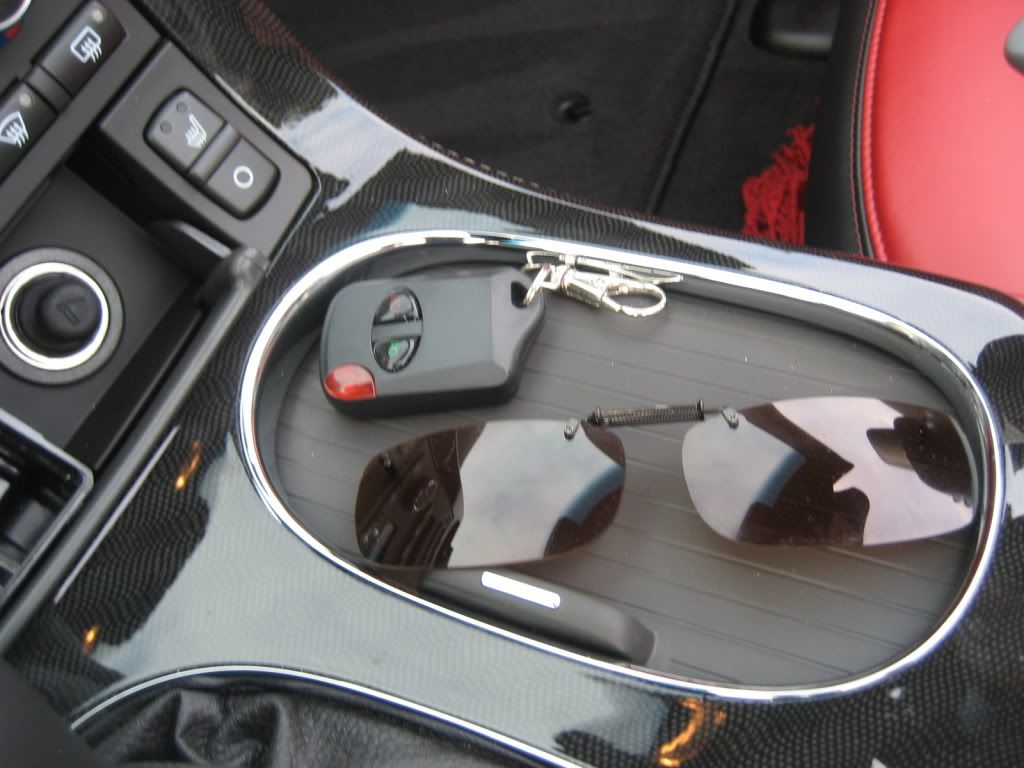
That's right! Mild-to-Wild Exhaust!
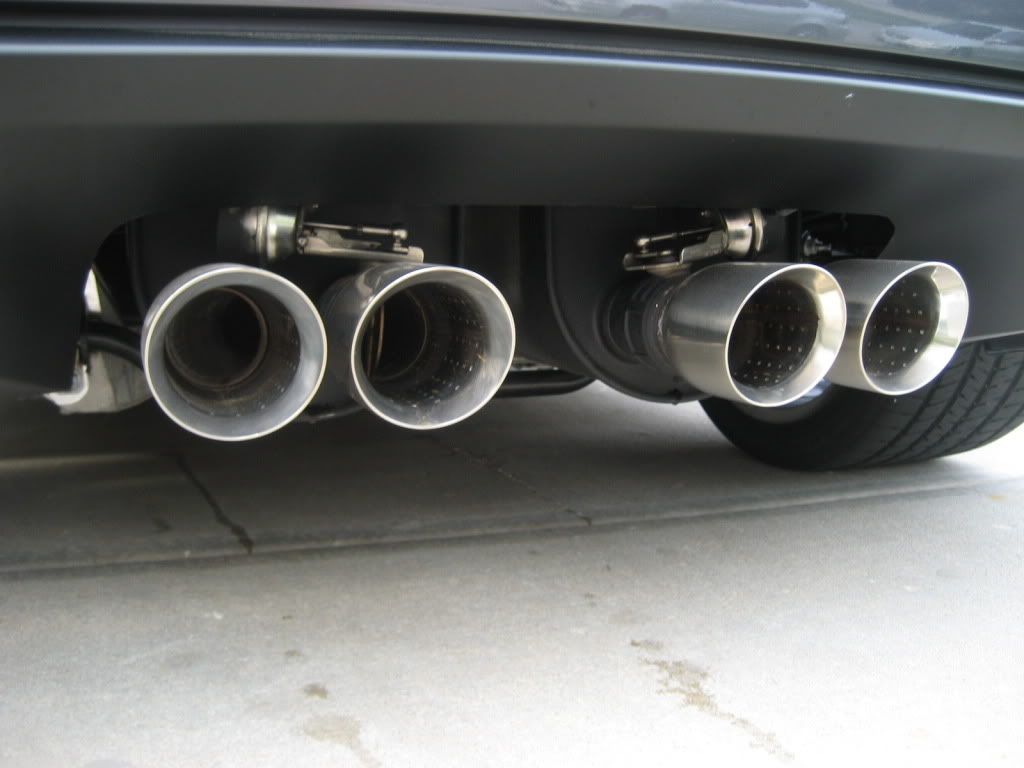
335's out back! ut::biggrin:
ut::biggrin:
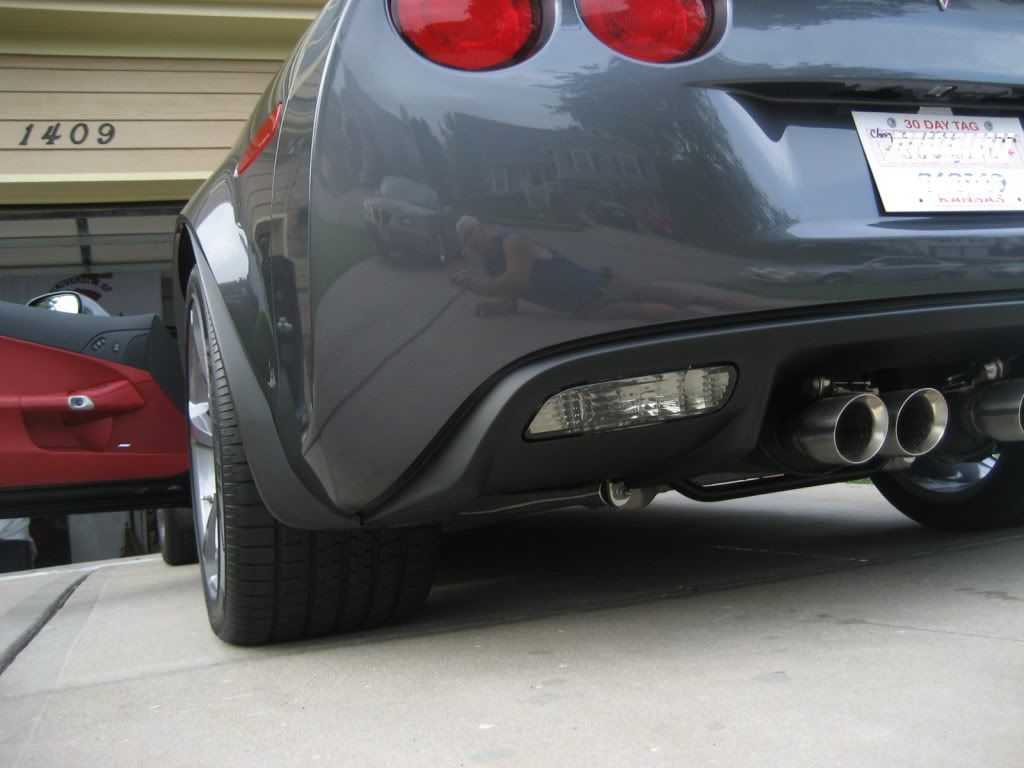
After claying, I inspected the entire car under the Brinkman and there are no swirls. (Dealer never touched the car. I made sure of that!)
Process:
Washed with Meguiars Gold Class
Dried with leaf blower/Big blue
Clayed with Zaino Red Clay/Z6 lube (lots of BROWN rail dust!)
Wiped with IPA/water
Applied BFWD by hand, wiped with Chem Guys "Fluffer" towel (x2 with one hour between coats)
Final wipedown with Z8.
Interior wipedown with Meguiar's Interior Detailer (thanks for the rec Nick!):biggrin:
Engine - quick wipedown with Z6
Haven't protected the wheels yet, but planning on clay/Wheelwax.
GM did a pretty good job on this clear coat. Very little orange peal!
Here they are:














OOOOOOOOO..... What's that little remote for?

That's right! Mild-to-Wild Exhaust!

335's out back!

imported_The Pad Man
New member
Bill,
How do you like the exhaust? I have that on my '08 and think it sounds pretty throaty open and damn quiet when closed. What are you thoughts?
How do you like the exhaust? I have that on my '08 and think it sounds pretty throaty open and damn quiet when closed. What are you thoughts?
Tuck91
New member
Wow Bill.
Your Corvette looks amazing.
How did you like the Quik Interior Detailer? Did you use it on the leather as well?
Your Corvette looks amazing.
How did you like the Quik Interior Detailer? Did you use it on the leather as well?
imported_Pats300zx
New member
Awesome job Bill...The exhaust is very "James Bond"  ancing Dot:
ancing Dot: ancing Dot:
ancing Dot:
imported_Luster
New member
Bill,
How do you like the exhaust? I have that on my '08 and think it sounds pretty throaty open and damn quiet when closed. What are you thoughts?
Open = LOUD enough to attract cops.
Closed = Quiet enough to talk on a cell phone.
I think it's a fantastic system. I can cruise around town with it open and hear the exhaust pound the ground, then it's nice and quiet on the hiway.
Wow Bill.
Your Corvette looks amazing.
How did you like the Quik Interior Detailer? Did you use it on the leather as well?
Yeah, after your recommendation I ran up to O'Reilly's and picked up a bottle. I used it on everything. Steering wheel, dash, seats, console, doors. Just as you said. No streaks, flat finish!:cornut:
Looks great Bill. Now, like I've told you before, go get it dirty again!!!
I love getting it dirty almost as much as getting it clean!:w00t::wink::Innocent:
Bill, hope your neighbors didn't see you laying on the ground. Did they call 911?
Nothing they haven't seen before!:rofl:
Awesome job Bill...The exhaust is very "James Bond"ancing Dot:
ancing Dot:
I agree. Very cool "toy"!:w00t:
Old Pirate
AMG Classic Car Detailing
Bill, which corvette did you get rid of?
